Known for Rebellion Leader | Name Vincent Oge | |
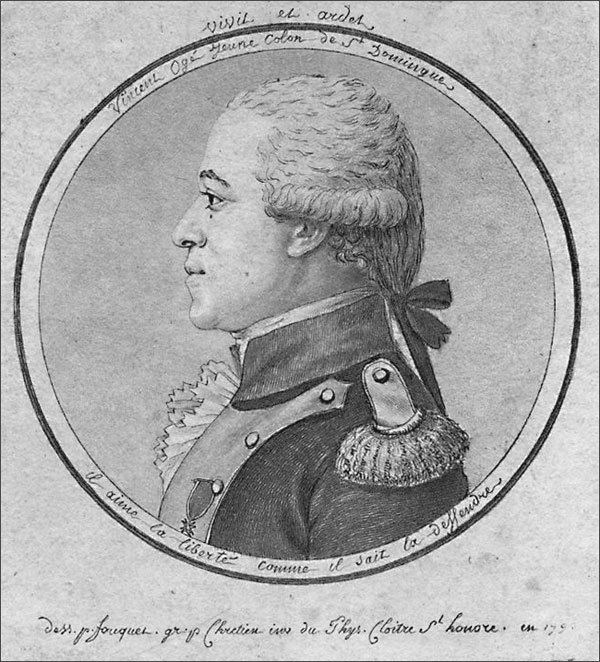 | ||
Died 6 February 1791(1791-02-06)Cap-Francais | ||
Jean vilfort eustache ap pale de vincent og nan kesyon devl pman touris nan dondon
Vincent Ogé ([oʒe]; c.1755–1791) was a wealthy free man of mixed race descent and the instigator of a revolt against white colonial authority in French Saint-Domingue that lasted from October to December 1790 in the area outside Cap-Français, the colony's main city. The Ogé revolt of 1790 foretold the massive slave uprising of August 1791 that began the Haitian Revolution.
Contents
- Jean vilfort eustache ap pale de vincent og nan kesyon devl pman touris nan dondon
- Vincent Oge
- Biography
- References
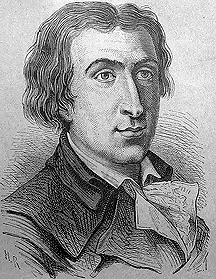
Vincent Oge
Biography
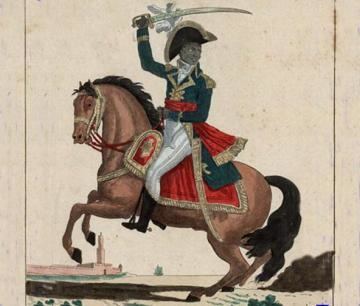
Ogé was a wealthy and educated free man of colour born in Dondon, Saint-Domingue, of one-quarter African descent and three-quarters French ancestry (a "quadroon"). He was the third son of Jacques Ogé, a white man and Jacqueline Ossé, a free woman of color. With eight children, the Ogé family was large, and Vincent is often confused with his older brother Jacques, who was also involved in what as known as the Ogé revolt. The family owned a coffee plantation in Dondon parish and his mother later held a contract to supply meat to the town's butchers. Educated in Bordeaux, Ogé returned to work with his uncle and namesake Vincent Ogé, a merchant in the major colonial city of Cap-Français (today's Cap-Haïtien). Vincent Ogé jeune (the younger), as he was called for most of his life, eventually took over his uncle's business. He leased valuable urban properties, traded coffee and imported French products to the colony.
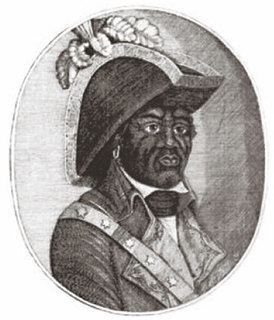
In 1789 he was in Paris on business when the French Revolution broke out. By August of that year he had approached a group of colonial planters living in Paris to propose changing racial laws in the colony that discriminated against light-skinned men regardless of their wealth and education. Independently Julien Raimond, from a similar background in Saint-Domingue, spoke to the group of planters about the same time. When the planters (called grands blancs) rebuffed their ideas, Ogé and Raimond began to attend meetings in Paris of a group of headed by Étienne Dejoly, a white lawyer. He was a member of the Society of the Friends of the Blacks (Société des Amis des Noirs), an anti-slavery society founded in 1788 in Paris by Jacques Pierre Brissot.
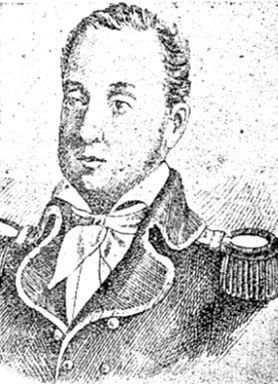
Together with Dejoly, Raimond and Ogé quickly became the leaders of this group. They began to pressure the French National Assembly to give them representation and to force the colonists to allow voting rights for wealthy free men of color. Like others of their class, both men owned slaves in Saint-Domingue, and they claimed they did not intend to weaken slavery. Instead, they said, making free men of color equal to whites in political rights would strengthen their devotion to France and make the system of slavery more secure.

In October 1790 Ogé returned to Saint-Domingue determined to obtain voting privileges for free men of color, whether by persuasion or force. He believed that an amendment passed by the General Assembly of France in March of that year asserted the equality of free men of property. It read "all the proprietors... ought to be active citizens." Ogé believed this gave him the right to vote in upcoming colonial elections. He put pressure on the colonial governor and other authorities to guarantee the voting rights of wealthy free men of color; the colonial governor Count de Blanchelande refused. While free men of color had become educated and some were wealthy property owners, colonial laws excluded them from voting and holding office, and limited them in other ways.
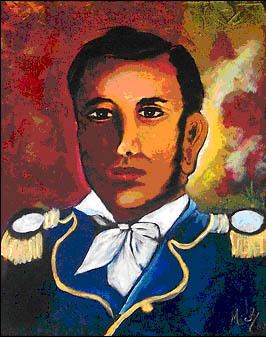
After his return to Saint-Domingue, Vincent Ogé sent this letter from Grande Rivière, his camp in the Department of the North, to the President of the Assembly of that department:

With support Ogé obtained from the British abolitionist Thomas Clarkson in London, Ogé returned to Saint-Domingue via Charleston, South Carolina. Though planters accused him of purchasing firearms in the United States, there is no evidence of this. In October 1790, he arrived in Saint-Domingue. Meeting with Jean-Baptiste Chavannes, another free man of color, militiaman, and veteran of the American Revolution, Ogé soon gathered a force of about 250 to 300 free men of color. This group men successfully defeated or frightened away several detachments of colonial militia sent out from Cap-Français.
Ogé and his rebels were flushed out by a larger force of professional soldiers and forced across the border into the Spanish colony of Santo Domingo. On 20 November 1790, Ogé and 23 of his associates, including Jean-Baptiste Chavannes, were captured in Hinche, then part of the Spanish controlled part of Hispaniola. They surrendered after receiving guarantees of safety, but the Spanish authorities nevertheless returned Ogé and his men to the colonial government of de Blanchelande in Le Cap.
Vincent Ogé was brutally executed by being broken on the wheel in the public square in Le Cap on 6 February 1791. Dozens more of his men were severely punished in February 1791. Their treatment served only to heat up the already boiling cauldron of dissatisfaction among free men of color and slaves in the colony. Ogé became an important symbol of the injustices of a colonial slave society that wanted to restrict the benefits of the French Revolution to whites only.
